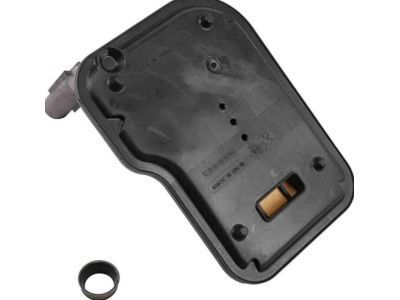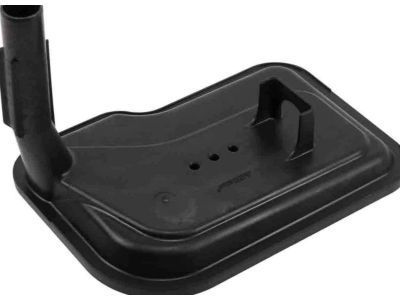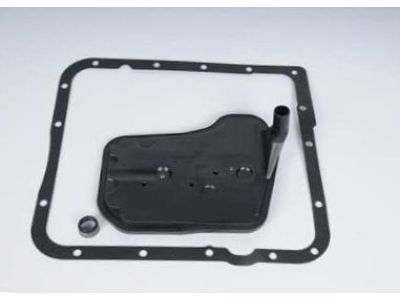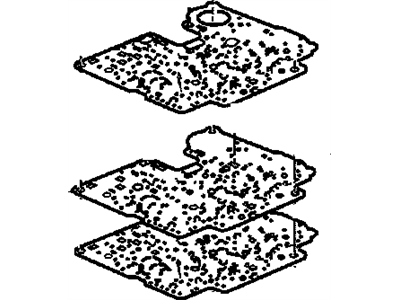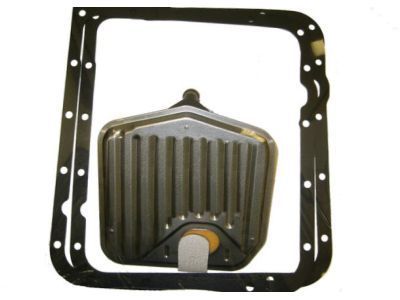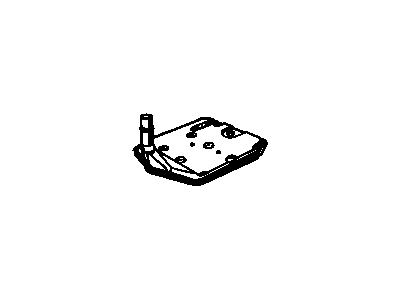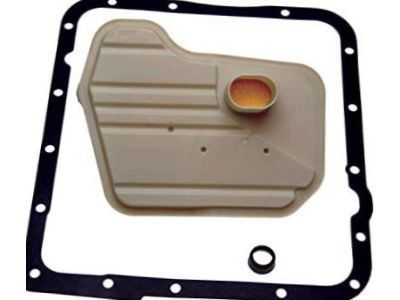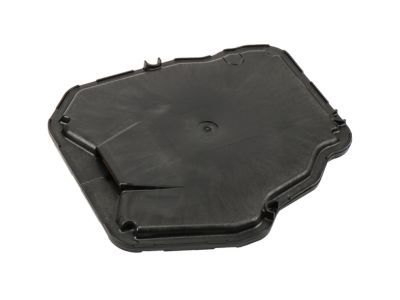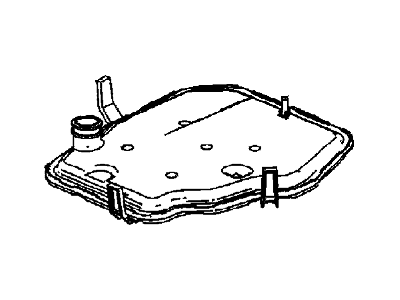
My Garage
My Account
Cart
Genuine Chevrolet Corvette Automatic Transmission Filter
AT Filter- Select Vehicle by Model
- Select Vehicle by VIN
Select Vehicle by Model
orMake
Model
Year
Select Vehicle by VIN
For the most accurate results, select vehicle by your VIN (Vehicle Identification Number).
7 Automatic Transmission Filters found
Chevrolet Corvette Filter Kit,Automatic Transmission Fluid
Part Number: 24236931$33.69 MSRP: $63.57You Save: $29.88 (47%)Ships in 1-2 Business DaysChevrolet Corvette Filter Kit,Automatic Transmission Fluid
Part Number: 24236799$34.67 MSRP: $65.42You Save: $30.75 (47%)Ships in 1-3 Business DaysChevrolet Corvette Filter Kit,Automatic Transmission Fluid
Part Number: 8657926$42.48 MSRP: $65.82You Save: $23.34 (36%)Ships in 1-3 Business DaysChevrolet Corvette Filter Kit,Automatic Transmission Oil (Deep Sump Y, Car)
Part Number: 24208574$36.22 MSRP: $64.96You Save: $28.74 (45%)Chevrolet Corvette Filter Assembly, Automatic Transmission Fluid
Part Number: 24274402$21.77 MSRP: $41.08You Save: $19.31 (48%)Chevrolet Corvette FILTER ASM,A/TRNS FLUID (KIT)
Part Number: 24045729$138.69 MSRP: $261.68You Save: $122.99 (47%)Chevrolet Corvette FILTER-A/TRNS FLUID (SUCTION)
Part Number: 24047742$81.57 MSRP: $146.31You Save: $64.74 (45%)Ships in 1-3 Business Days
Chevrolet Corvette Automatic Transmission Filter
There exist a Automatic Transmission Filter in Chevrolet Corvette automobiles whose function is to ensure that the transmission system is healthy. One of its major uses is to avoid prevent small passages in moving parts from becoming blocked by contaminants in the transmission fluid. This filtration is vital in allowing the transmission to functions optimally as well as to last as long as possible. Since its inception, Chevrolet Corvette has used several kinds of Transmission such as the Automatic Transmission Filters: that are internal behind the transmission fluid pan and can also use spin/on or cartridge type of Automatic Transmission Filters. Internal filters while most of them can be removed to have access to them during a pleasurable exercise, some designs will need a lot of disassembling when wanting to replace them. While external filters serve the purpose of helping to gain access and to change more easily and more often. Moreover, there are performance Automatic Transmission Filters which have better filtration levels and higher flow capacity which helps to revive lost fuel economy besides improving the overall efficiency of the transmission.
Each OEM Chevrolet Corvette Automatic Transmission Filter we offer is competitively priced and comes with the assurance of the manufacturer's warranty for the part. Furthermore, we guarantee the speedy delivery of your orders right to your doorstep. Our hassle-free return policy is also in place for your peace of mind.
Chevrolet Corvette Automatic Transmission Filter Parts Questions & Experts Answers
- Q: What steps should be taken before beginning work on the transmission fluid and Automatic Transmission Filter change on Chevrolet Corvette?A:The transmission fluid of the described car has to be bought beforehand as well as the new filter, the required tools including the floor jack, jack stands to support the car, the drain pan that can hold at least 5 quarts, the newspapers, and the clean rags. Lift the car and put it safely on some stands and then remove the lower shield of the vehicle though it is done while the car is leveled. Position the drain pan beneath the transmission fluid pan, then unscrew the front and side pan mounting bolts, then turn the rear ones a turn or four. Removal of the transmission pan requires loosening of the rear bolts to create a gap then pulling the front of the pan down with the help of a screwdriver. Disengage the remaining bolts and pull out the pan and gasket, and empty the last of the fluid and then clean the gasket surface of the transmission very thoroughly, to make sure that all traces of the old gasket and sealant have been swept away. Disconnect and clean the fluid pan using a solvent, then renew the magnet mounted at the base of the pan, at that point clean it. Very carefully pull the filter straight down out of the transmission, if the filter tube breaks off in the housing it will be very difficult to replace later, remove the filter seal and install a new one using a seal puller and slide hammer attachment. Before, placing the gasket make sure the surface of the transmission pan is clean, place a new gasket on the pan then start inserting two bolts if the gasket doesn't have locking tabs. Ensure that there is a magnet if available, align the pan to the transmission and fasten each bolt incrementally to the final stage without overtightening, ensure that oil pan bolts are well inserted for better fitting. Fill in the new fluid to the advised level of transmission, next, rev up the engine to fast idle while setting the gear to park and parking brake engaged. Operate the gear selector through each gear and back to the park position in order to check the fluid level, however this is normally very low at this position. During the initial runs of the car, check underneath the vehicle for signs of leakage, and finally, note that the material removed from the transmission cannot be reclaimed and should be discharged correspondingly. Consult local auto parts stores, disposal facilities or local environmental agency for the disposal, once the fluid is cool, drain it into a disposal container and transport it for disposal and do not dispose it by pouring it on the ground or in the drains.
Related Chevrolet Corvette Parts
Browse by Year
2024 Automatic Transmission Filter 2023 Automatic Transmission Filter 2022 Automatic Transmission Filter 2021 Automatic Transmission Filter 2020 Automatic Transmission Filter 2019 Automatic Transmission Filter 2018 Automatic Transmission Filter 2017 Automatic Transmission Filter 2016 Automatic Transmission Filter 2015 Automatic Transmission Filter 2014 Automatic Transmission Filter 2013 Automatic Transmission Filter 2012 Automatic Transmission Filter 2011 Automatic Transmission Filter 2010 Automatic Transmission Filter 2009 Automatic Transmission Filter 2008 Automatic Transmission Filter 2007 Automatic Transmission Filter 2006 Automatic Transmission Filter 2005 Automatic Transmission Filter 2004 Automatic Transmission Filter 2003 Automatic Transmission Filter 2002 Automatic Transmission Filter 2001 Automatic Transmission Filter 2000 Automatic Transmission Filter 1999 Automatic Transmission Filter 1998 Automatic Transmission Filter 1997 Automatic Transmission Filter 1996 Automatic Transmission Filter 1995 Automatic Transmission Filter 1994 Automatic Transmission Filter 1993 Automatic Transmission Filter 1992 Automatic Transmission Filter 1991 Automatic Transmission Filter 1990 Automatic Transmission Filter 1989 Automatic Transmission Filter 1988 Automatic Transmission Filter 1987 Automatic Transmission Filter 1986 Automatic Transmission Filter 1985 Automatic Transmission Filter 1984 Automatic Transmission Filter
